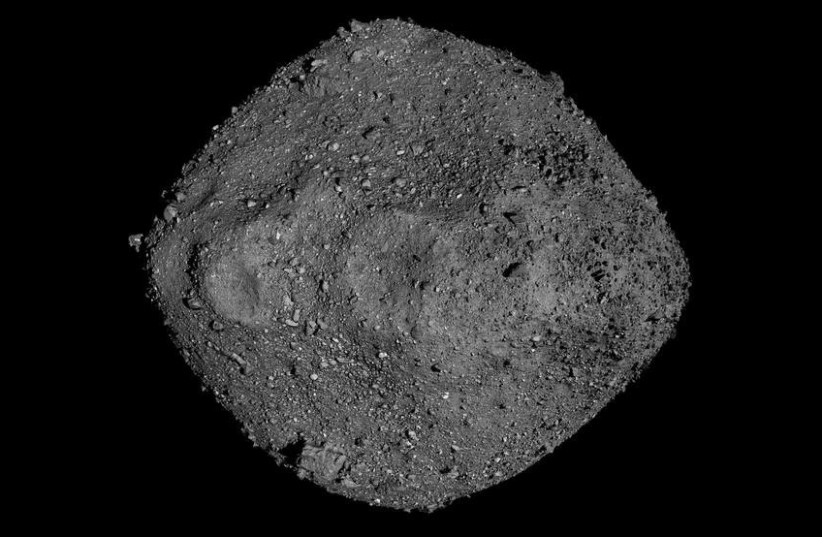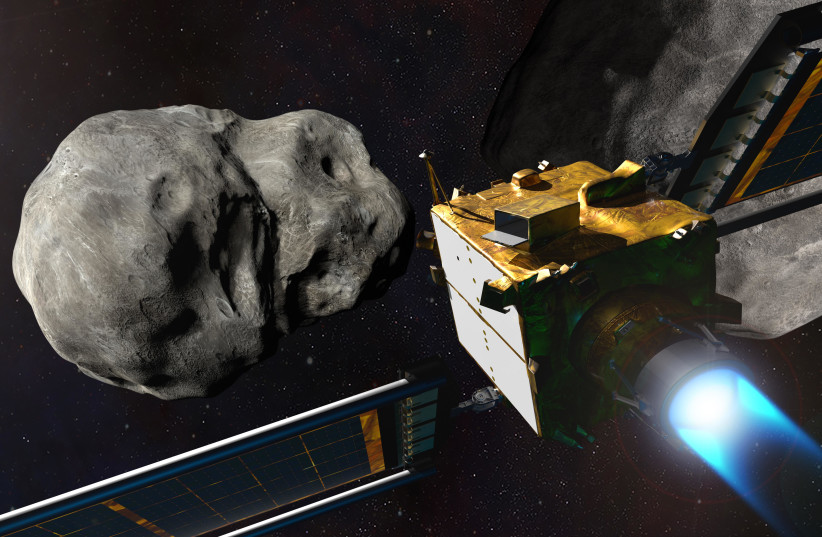Two asteroids approximately the size of 100 adult pugs are set to barrel towards Earth this Tuesday, according to NASA's asteroid tracker.
The asteroids in question have been designated 2019 BO2 and 2019 BZ4, according to the Center for Near-Earth Object Studies (CNEOS) at NASA's Jet Propulsion Laboratory (JPL).
How big is the asteroid coming toward Earth in 2023?
As stated earlier both asteroids have a diameter that at most measures to around 100 pugs in width, assuming those pugs were stacked on top of each other, paws to shoulders, forming some sort of adorable wheezing leaning tower of pugness.
Both asteroids 2019 BO2 and 2019 BZ4 have a diameter ranging between 15 meters to 36 meters in width.

To put that in perspective, the average fully-grown adult pug stands at around 36 centimeters in height. Now, as an explanation for any metrically-challenged American readers, since there are 100 centimeters in a meter, then that means there are 100 pugs in 36 meters.
Now, pugs are also famed for their flat faces, incredible appetite and laziness. This has led to the rotund canines weighing around eight kilograms on average. While the exact mass of these two asteroids isn't definitively known, it can be safely assumed that they are at the very least, a bit heavier than a 100-pug grumble – and yes, a group of pugs is called a grumble.
But we do know the asteroids' speeds, and here the two aren't exactly equal to one another.
Asteroid 2019 BO2 is the faster of the two, being over three times faster than asteroid 2019 BZ4. According to NASA, this asteroid is clocking in at a speed of around 16.21 kilometers per second, or 58,356 kilometers per hour.
Now, how does this measure up to the humble and loyal pug?
Well, pugs aren't exactly known for their speed and athleticism – something viral YouTube sensation Loca the Pug embodied in her hit 2012 video "The pug that couldn't run." Despite this, they can still run faster than most give them credit for – an International Pug Race is even held in Germany in honor of this.
While most pugs tend to run around 16 kilometers per hour at most, multiple-time International Pug Race champion Emma has pugnaciously passed the pack, clocking in at just under 30 kilometers per hour.
This means that asteroid 2019 BO2 is around 1,945 times faster than the running speed of what may very well be one of the fastest pugs in history.
By contrast, asteroid 2019 BZ4 is much slower, clocking in at just 5.60 kilometers per second, or 20,160 kilometers per hour – meaning a bit closer to pug-speed, though still much faster.
Will an asteroid hit the Earth in 2023?
Pugs are one of the most beloved dogs in the world, renowned for their loyalty, being good with children and ideal for apartment life. Their success goes as far back as ancient China, to becoming the official dog of Dutch royalty and even having major appearances in pop culture, whether in movies, TV shows or becoming viral sensations. These include Noodle the Pug, whose "Bones Day" forecasts over whether a day would be good or not were the delight of TikTok.
By contrast, asteroid impacts are far less liked than pugs, and would certainly qualify for a "No Bones Day." But luckily, that won't happen with these two asteroids.
Of the two, asteroid 2019 BO2 is going to fly the closest to the Earth and could pass as close as 2.4 million kilometers away.
The Moon, by contrast, orbits the Earth at around 384,000 kilometers on average, so while on a cosmic scale, this is a bit close, on a practical level it's nowhere near us.
And even if it did hit the Earth, it's still a bit on the small side.
According to research from Israel's Davidson Institute of Science, the educational arm of Weizmann Institute of Science, an asteroid 140 meters in diameter or more would release an amount of energy at least a thousand times greater than that released by the first atomic bomb if it impacted Earth.
An even larger asteroid that's over 300 meters wide – like the Apophis asteroid – could destroy an entire continent. An asteroid over a kilometer in width – like asteroid 138971 (2001 CB21), which passed the Earth in early March 2022 – could trigger a worldwide cataclysm.
Small asteroids like 2019 BO2 and 2019 BZ4 likely wouldn't make it far past the atmosphere, exploding in a massive airbust that, while very loud, likely wouldn't cause any actual danger.
What about some recent asteroid impacts as another comparison?
Back in March 2022, a small asteroid around half the size of a giraffe known as 2022 EB5 hit the Earth just hours after its discovery. But given how small it was, it didn't exactly result in any damage.
More recently, in late November 2022, tiny asteroid 2022 WJ1 harmlessly exploded into fragments that scattered around Lake Ontario. NASA had predicted that this small meter-long asteroid would impact this location and knew there wouldn't be any harm from it.
In fact, rather than one of these asteroids, you are far more likely to be hurt by an actual grumble of 100 pugs rushing towards you at much slower speeds
When is the next asteroid predicted to hit the Earth?
Not for a very, very long time, at least in terms of apocalyptic-level collisions.
NASA has checked the numbers. According to them, Earth, and its plentiful and playful pug population, is safe from any catastrophic asteroid impacts for the next century, meaning no asteroid-induced Armageddon is on its way.

Which asteroid could potentially hit Earth?
At this moment, scientists don't know for sure. However, there are a few candidates for the most dangerous asteroid for the planet.
One of the most dangerous asteroids at the time of writing is the gigantic 500-meter-wide asteroid Bennu, which has an orbit that can cross with Earth's own.
If this asteroid impacted the Earth, the result would be catastrophic – but as far as NASA is aware, this won't be for a long time, if ever.

Do we have any way to stop an asteroid from hitting the Earth?
We just might, thanks to the hard work of scientists around the world. And no, it doesn't involve pugs – but I am sure they'd try hard to help if they could.
The field of planetary defense is specifically organized to find ways of keeping the Earth safe from asteroids and scientists at NASA and across the globe are hard at work trying to do just that.
Most notably, this has involved pioneering the exciting technique of asteroid deflection, which uses kinetic energy through vehicular collision to ever so slightly change an asteroid's orbital path, meaning it would, in theory, no longer be set to crash into Earth but instead fly past it.
In layman's terms, NASA decided to make a spacecraft punch an asteroid to make it move out of the way.
In fact, that is exactly what recently happened in September in NASA's landmark Double Asteroid Redirection Test (DART) Mission, which tested out this theory on a faraway asteroid Dimorphous in the Didymous system.
And according to the results, the DART Mission was a success, managing to alter the asteroid's orbit.
And NASA isn't alone in this either. China is also getting ready to test out its own asteroid deflection mission, set to launch in 2025.
And with scientists discovering more asteroids and getting a better picture of our many rocky neighbors in space – such as the asteroid that recently photobombed the Hubble Space Telescope – further advances should keep coming.
All in all, it seems that humanity is working on building the arsenal it needs to tame the asteroid menace lying in space, the final frontier.
